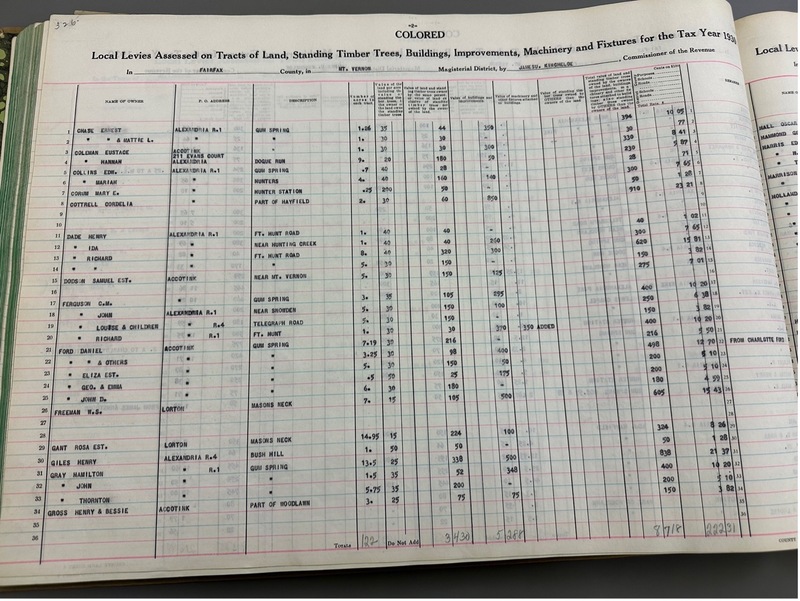The Ford Family Deeds (earliest and latest)
Molly Pitts
The earliest deed that I could retrieve regarding the Ford family or John B. Ford was one of William Ford; This document is the deed shared between the grantor, West Ford, and his son who is the grantee, William Ford. Created on the 17th of April 1857, this deed legally shows the official transfer of ownership. What’s unique about the deed itself is that it has a map representing where the land is being divided. Other documentation was recovered showing the transfer of land to William’s other siblings, however, William was one of children who stayed in Gum Springs the entirety of his life which means there will be more records of his life.
This deed involves John B. and Charlotte Ford. Charlotte Ford, in this case, refers to his wife. Although they do have a daughter named Charlotte; this is a legal document stating that the deed is between the couple. Although it is a little difficult to understand the cursive writing, it seems this document is passing on land/land rights from John B. to Charlotte. However, it does mention a woman named Polly Taylor. We weren’t able to find any documentation on Polly Taylor, however she was at least a witness to this deed. The couple did have a daughter named Polly, so she could have changed her last name when she got married, but it was never confirmed.
According to future records, John B. would’ve been 43 years old when this document was issued. Given that the average life expectancy is around this age for males at the time, it would’ve been relevant and proactive to give the land to Charlotte. Charlotte and John shared a nine-year age gap, so it was expected Charlotte would live longer. It was later proven that he would live much longer than this, but it doesn’t cause an issue for the family if he had given Elizabeth the land. This theory, however, doesn’t hold up due to gender roles. Women could not own land at the time, so it’s unclear if it is just adding Elizabeth’s name to the records of the land or if he gave it to her.
A controversy that scholars often encounter is the difficult process of deciphering little name nuances and family relations. For example, this document as well as others state that the individual listed is John B. Ford. Where this becomes an issue is the comparison of other official tax records that state John D. Ford. Determining if these individuals are two different people, or the same person, is where the leads disappeared. Fortunately, most records that I’ve been able to find reflect a John B. Ford, and fewer say John D. Ford, so comparing dates rather than names are the priority.
For example, a document that was obtained through a peer’s research was regarding Eliza Ford. This document was from 1930, which is supposedly after John B. Ford had passed, but a death certificate wasn’t found. That’s not to say there isn’t one, but it does mean it had to be elsewhere within the archives. Census data obtained through Ancestry, a document from 1920 has John B’s family listed, and during this time he was 72 years old.
Through further analysis of the document regarding Eliza Ford, it was quickly determined that John D. Ford was another person. There is a family tree within the archives, but it’s difficult to read. Because John B. had an uncle named Daniel Ford, a brother named Daniel Ford, and a child named Daniel Ford; it’s unclear if John D. is a second cousin, a nephew, or a grandchild to John B. Ford.
Census data given by Ancestry, a document from 1920 has John B’s family listed, and during this time he was 72 years old. Where things become muddier, is that other census documents state that a John Bell Ford supposedly died at 67. Limited information on John Bell Ford doesn’t help differentiate anything, but the census record above has been the most reliable information.
Although this last deed doesn’t necessarily involve John B. as a key member in this document, it is the last documentation found on John B. Ford. He was mentioned as having his 14 acres still under his name, but we have other documents to suggest he had kept his plan of giving it to his children. Although none of those deeds were recovered between John B. and his children, through further searching they could be obtained. This would help in determining when the deeds were issued and when John B. gave his land away.








